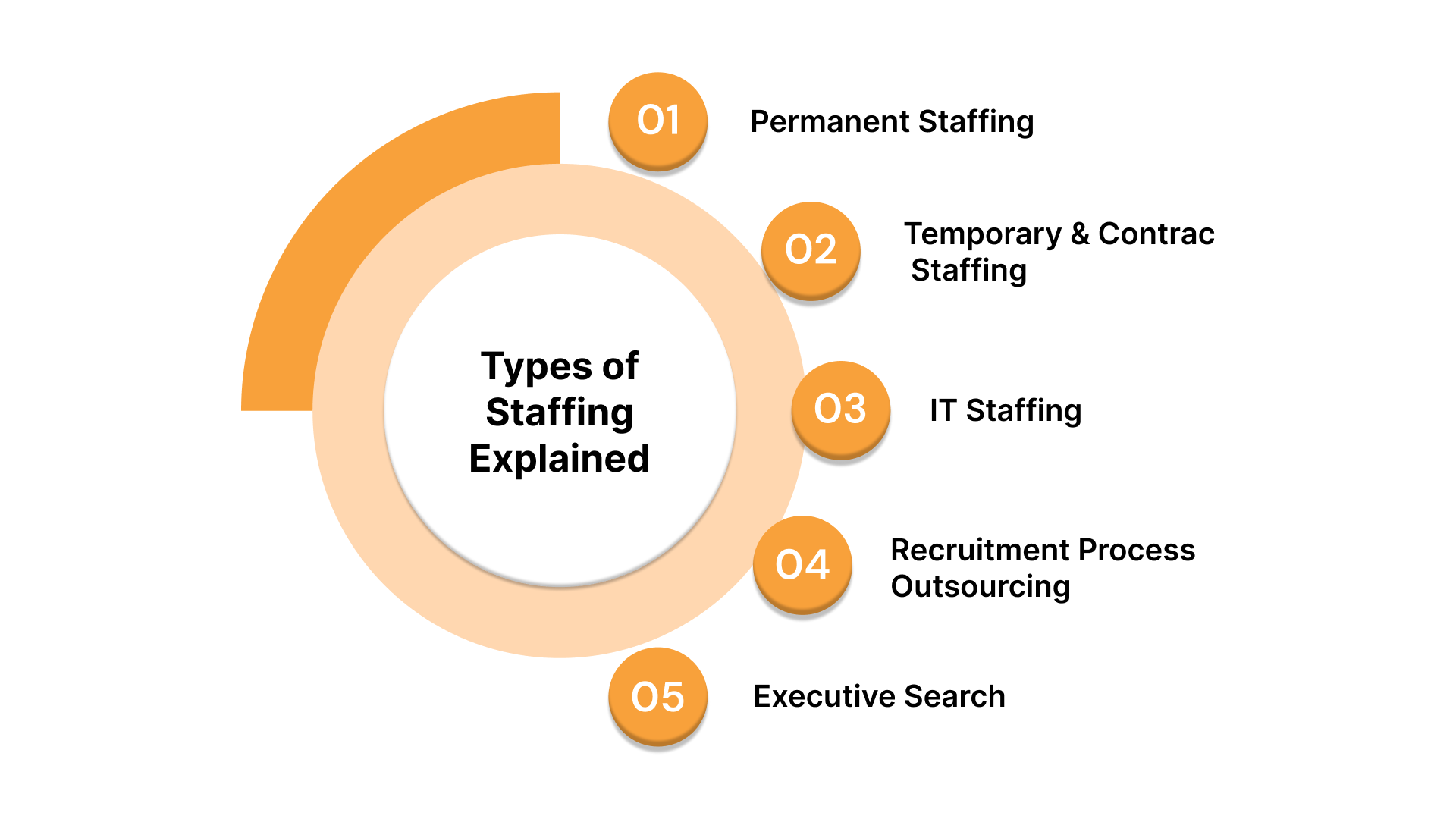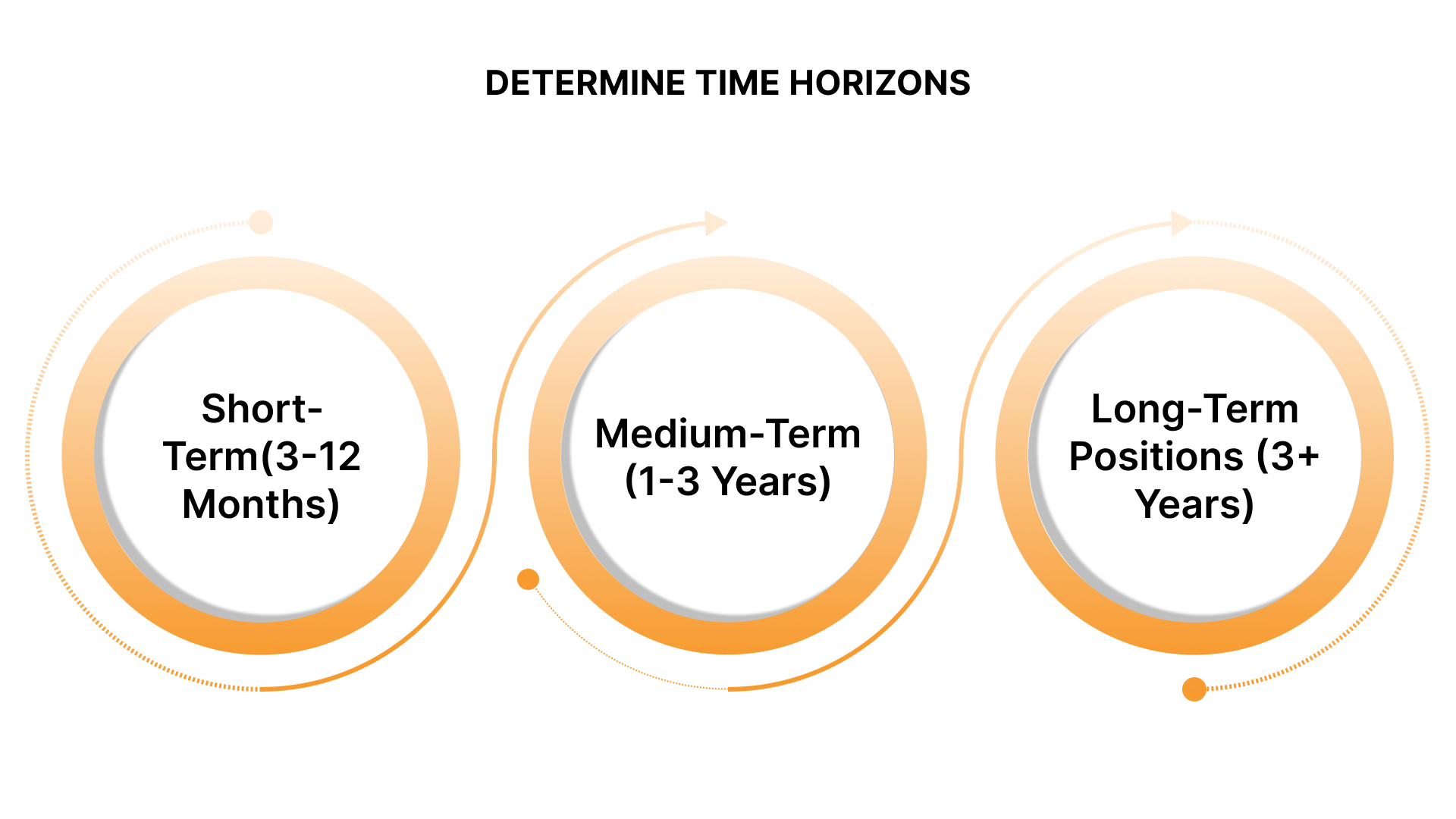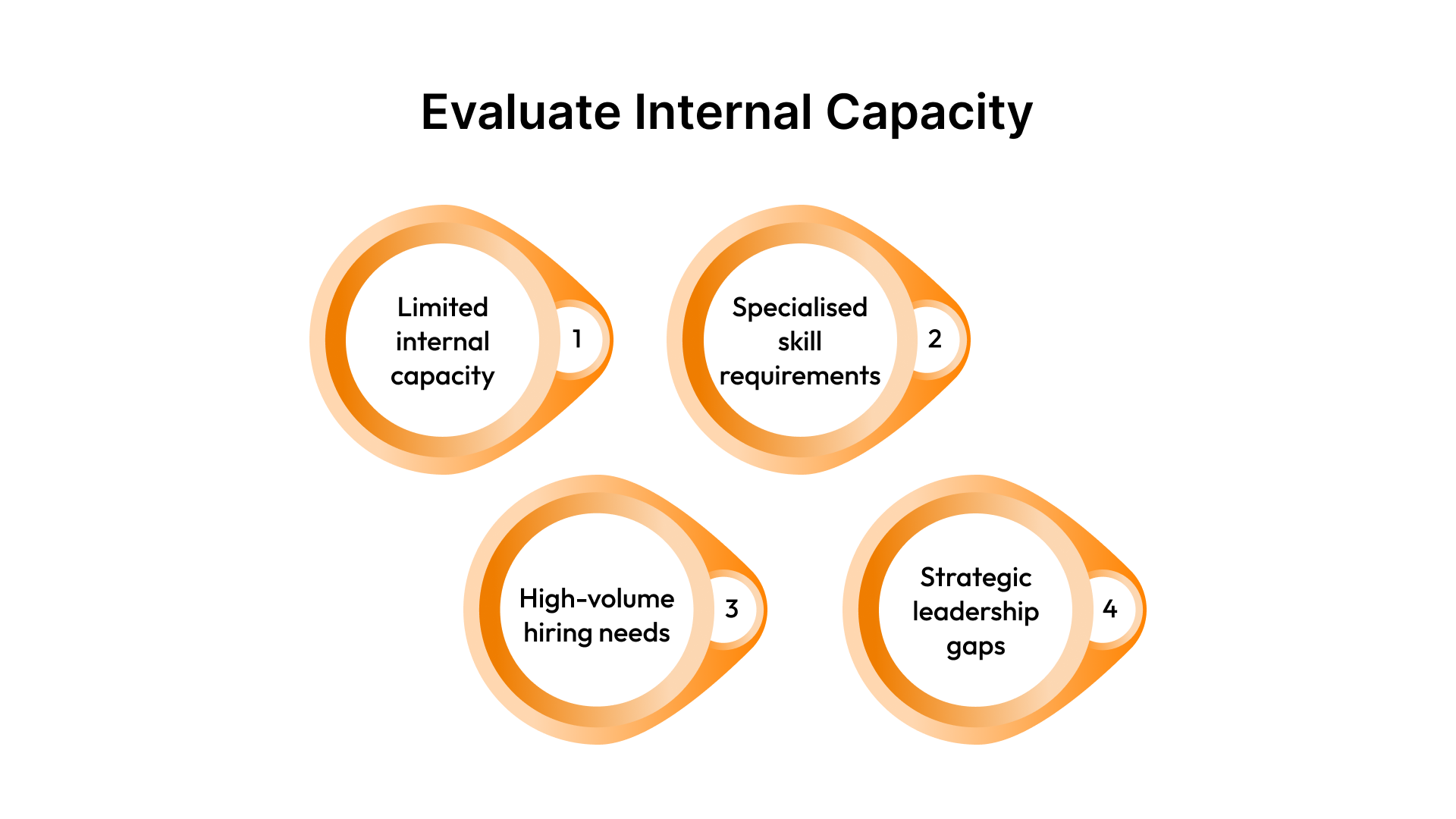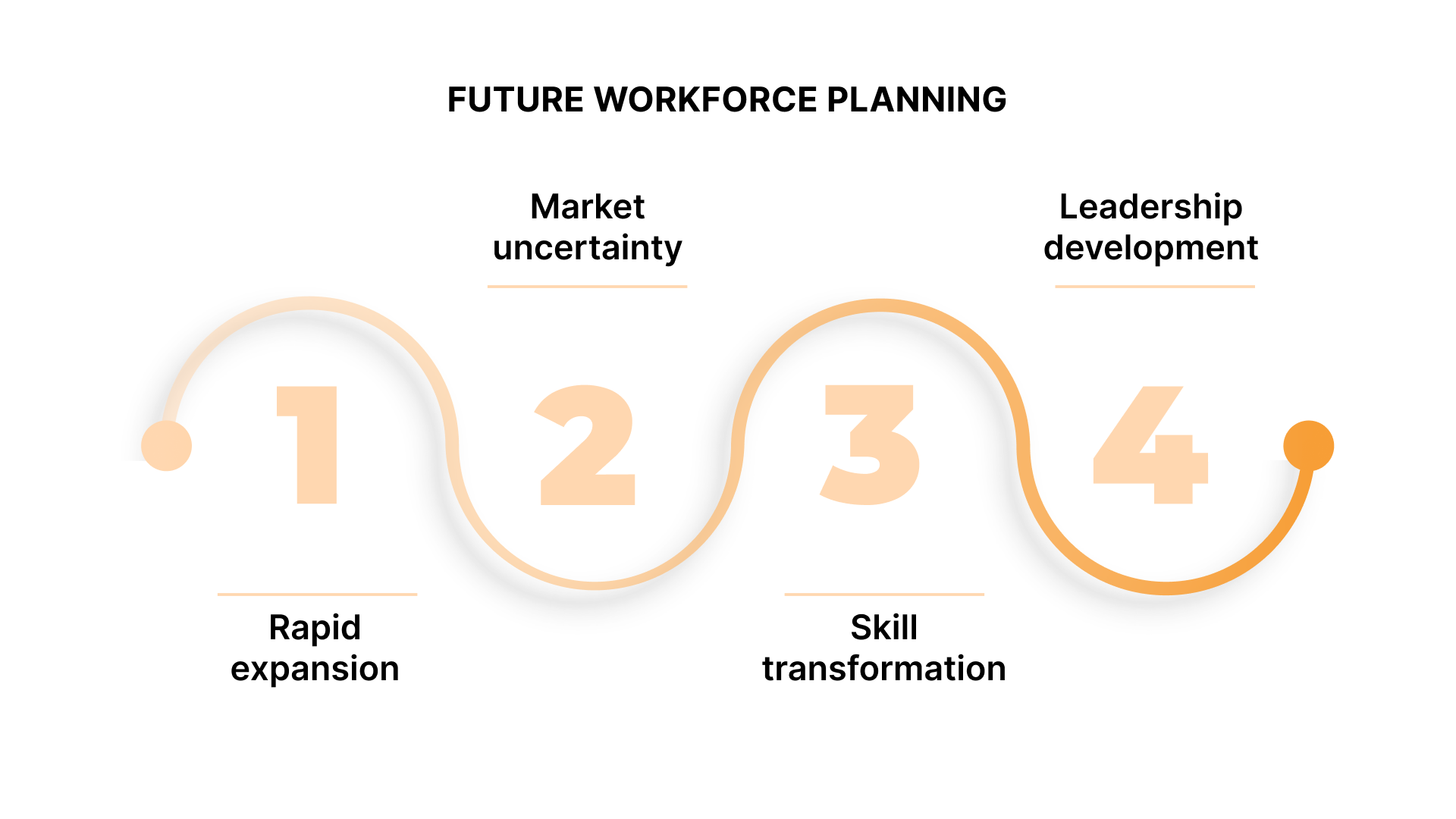If you had to double your team in 30 days, would you know which staffing model to choose?
In the hyper-competitive business environment today, hiring should be your strategic differentiator. Yet many organisations struggle with choosing the appropriate staffing approach for their unique needs. Understanding different types of staffing becomes crucial when you’re scaling operations, entering new markets, or managing fluctuating workforce demands.
Whether you’re a Global Capability Centre (GCC) expanding across India or a fintech startup preparing for rapid growth, your staffing decisions directly impact operational efficiency and bottom-line results. A wrong decision can lead to costly delays, quality issues, and missed business opportunities.
In this blog, we help you understand the types of staffing available to Indian enterprises. You’ll discover how each model works, their distinct advantages, and practical frameworks for choosing the best fit for your organisation’s specific requirements.
Key Takeaways
- Staffing types differ in terms of duration, structure, and strategic intent; choosing the wrong one can slow down operations or increase costs.
- Permanent staffing offers long-term stability, while contract and IT staffing provide agility for project-based or short-term needs.
- RPO is ideal for businesses needing scalable, process-driven recruitment, and executive search supports strategic leadership hiring.
- Key selection factors include role duration, urgency, internal recruitment capacity, compliance requirements, and cost implications.
- A blended staffing approach tailored to each business function often yields the most efficient and future-ready workforce strategy.
What is Staffing?
Staffing encompasses the complete process of recruiting, hiring, deploying, and retaining talent within your organisation. It goes beyond simply filling vacant positions. Effective staffing aligns your workforce capabilities with business objectives, market demands, and operational requirements.
Your staffing strategy should reflect your company’s growth trajectory and industry dynamics. For instance, a Global Capability Centre expanding into new service lines requires different staffing approaches than a manufacturing firm managing seasonal production cycles. The key lies in matching your talent acquisition methods to your specific business context.
Strategic staffing involves several critical components:
- Workforce planning: Forecasting future talent needs based on business goals
- Talent sourcing: Identifying and attracting qualified candidates through various channels
- Selection processes: Evaluating and choosing the best-fit candidates
- Deployment strategies: Placing talent in roles that maximise their impact
- Retention mechanisms: Keeping valuable employees engaged and productive
Modern staffing extends beyond traditional permanent hiring. It includes flexible workforce solutions that help you respond quickly to market changes, project requirements, and skill shortages. This adaptability becomes particularly important for technology companies and shared service centres operating in India’s dynamic business environment.
Let’s explore the specific types of staffing models available to your organisation.
Key Types of Staffing Explained

Different business scenarios require different staffing approaches. Understanding each type helps you make informed decisions about which model best serves your organisational needs. The following sections break down the most common types of staffing, their characteristics, and practical applications.
1. Permanent Staffing
Permanent staffing involves hiring full-time employees who become integral parts of your organisation. These individuals receive comprehensive benefits, job security, and long-term career development opportunities within your company structure.
Key Characteristics:
- Direct employment relationship with your organisation
- Comprehensive benefits package including health insurance, retirement plans, and paid leave
- Long-term commitment from both employer and employee
- Career advancement opportunities within the company
- Full integration into company culture and processes
Ideal For:
Permanent staffing is exceptionally well-suited for core business functions that require in-depth institutional knowledge. These roles typically involve strategic decision-making, customer relationship management, and operational continuity. Companies benefit most from permanent staffing when they need employees who understand company culture, processes, and long-term objectives.
For example, a BFSI institution expanding its digital banking services would use permanent staffing for senior software architects, product managers, and customer experience leads. These roles require a deep understanding of regulatory compliance, customer needs, and strategic direction. The investment in permanent staff pays dividends through consistent service delivery and knowledge retention.
2. Temporary & Contract Staffing
Temporary and contract staffing provides flexible workforce solutions for specific projects, seasonal demands, or interim requirements. These arrangements offer both employers and workers greater flexibility while maintaining professional standards.
Key Characteristics:
- Fixed-term employment contracts with defined start and end dates
- Project-specific or time-bound assignments
- Flexibility to scale workforce up or down based on demand
- Specialised skills for particular business needs
- Reduced long-term employment obligations
Ideal For:
This staffing type excels in situations that require rapid skill deployment, project-based work, or filling temporary gaps. It’s particularly valuable during peak business periods, system implementations, or when testing new market opportunities before committing to permanent expansion.
For instance, a product company launching a new mobile application might engage contract developers, QA testers, and UX designers for a six-month development cycle. This approach provides access to specialised skills without long-term commitments, allowing the company to scale down after project completion.
3. IT Staffing
IT staffing represents a specialised subset focusing exclusively on technology talent acquisition. This approach addresses the unique challenges of sourcing, evaluating, and deploying technical professionals in rapidly evolving technology environments.
Key Characteristics:
- Specialised focus on technology roles and skills
- Access to niche technical talent pools
- Rapid deployment to meet project timelines
- Expertise in evaluating technical competencies
- Understanding of technology trends and skill requirements
Ideal For:
Global Capability Centres and product companies rely heavily on IT staffing to maintain a competitive advantage. The rapid pace of technological change demands access to professionals with current skills in cloud computing, artificial intelligence, cybersecurity, and emerging technologies. Traditional recruitment methods often fall short in identifying and attracting these specialists.
For example, a shared service centre implementing cloud migration requires DevOps engineers, cloud architects, and security specialists. IT staffing provides access to professionals with specific expertise in cloud platforms, ensuring a smooth transition while maintaining operational security and efficiency.
4. Recruitment Process Outsourcing (RPO)
RPO involves outsourcing your entire recruitment function or specific components to external specialists. This comprehensive approach transforms recruitment from an internal administrative function into a strategic partnership with dedicated talent acquisition experts.
Key Characteristics:
- End-to-end management of recruitment processes
- A dedicated team embedded within your organisation
- Scalable capacity based on hiring volumes
- SLA-driven performance metrics
- Technology-enabled reporting and analytics
Ideal For:
RPO suits organisations with high-volume hiring needs, complex recruitment requirements, or limited internal recruitment capacity. It’s particularly valuable for companies expanding rapidly, entering new markets, or requiring specialised talent across multiple locations.
For example, a manufacturing company establishing a new production facility in Chennai might partner with an RPO provider to handle all recruitment activities. This includes workforce planning, sourcing strategies, candidate evaluation, and onboarding processes. The RPO team ensures consistent hiring standards while managing the scale and complexity of recruitment operations.
5. Executive Search
Executive search focuses on identifying and recruiting senior leadership talent for C-suite, vice president, and director-level positions. This specialised approach requires different methodologies from standard recruitment processes.
Key Characteristics:
- Targeted approach for senior leadership roles
- Confidential and discreet recruitment processes
- Extensive market mapping and candidate research
- Competency-based evaluation methods
- Strategic consultation on role requirements and market positioning
Ideal For:
Executive search becomes essential when you need transformational leadership, industry expertise, or strategic capability at the senior level. It’s particularly valuable for confidential searches, succession planning, or when seeking leaders with specific industry experience or cultural fit requirements.
For example, a fintech startup preparing for Series B funding might engage executive search services to identify a Chief Technology Officer with experience in payment systems, regulatory compliance, and team scaling. The search requires discretion, market knowledge, and the ability to evaluate both technical competency and leadership potential.
Direct Hire vs. Contract-to-Hire
Understanding the distinction between direct hire and contract-to-hire arrangements helps you choose the most appropriate employment model for specific situations.
Direct Hire:

- Immediate permanent employment relationship
- Full benefits and job security from day one
- Higher upfront commitment from both parties
- Best for critical roles with clear long-term needs
Contract-to-Hire:

- Initial contract period with option to convert to permanent
- Opportunity to evaluate fit before permanent commitment
- Flexibility to adjust terms based on performance
- Risk mitigation for both the employer and the employee
When to Use Each:
Direct hire works best when you have clear long-term requirements and confidence in role definition.
Contract-to-hire arrangements provide flexibility when evaluating cultural fit, performance, or evolving role requirements before making permanent commitments.
With these staffing types clearly defined, understanding their key differences becomes crucial for making informed decisions.
Key Differences Between Staffing Types
Selecting the right staffing approach requires understanding how various models compare across key business dimensions. The following analysis highlights the most important distinctions to consider when evaluating options.
| Criteria | Permanent Staffing | Contract/Temp Staffing | IT Staffing | RPO (Recruitment Process Outsourcing) | Executive Search |
| Duration & Commitment | Long-term, ongoing employment | Short to mid-term (3–18 months) | Project-based (6–12 months typical) | Ongoing, scalable based on hiring volume | Long-term, after detailed search & evaluation |
| Employment Relationship | Direct employment by your company | Employer of record is a staffing agency (e.g., V3) | Usually via a third-party or staffing partner | Varies: typically hybrid between internal & external teams | Direct employment after placement |
| Speed to Deploy | Moderate (depends on internal processes) | Fast (1–2 weeks average) | Fast to moderate, depending on tech stack complexity | Varies by role type and volume | Longest (4–12 weeks) due to seniority and sensitivity |
| Cost Implications | Higher long-term cost (salary, benefits, retention) | No long-term costs; higher hourly rates | Premium for specialised skills | Cost-effective at scale with predictable pricing | Premium pricing with long-term leadership ROI |
| Flexibility vs Stability | Low flexibility, high stability | High flexibility, limited long-term continuity | High flexibility with focused skill access | Balanced: scalable yet structured | Strategic stability, low flexibility |
| Compliance & Risk | Full compliance responsibility on the employer | Compliance is handled by a staffing provider | Requires attention to tech/data compliance | Shared compliance, depending on the engagement model | High regulatory sensitivity (corporate governance, etc.) |
Here’s how to interpret the table above in a strategic context:
1. Duration & Role Commitment
- Permanent staffing is ideal for core roles that require continuity, strategic alignment, and cultural integration.
- Contract and IT staffing excel when agility, speed, and short-term project deliverables are the priority.
- RPO supports ongoing hiring needs at scale, while executive search is tailored for long-term leadership stability.
2. Employment Structure
- Know who the legal employer is. For example, in contract models, V3 Staffing often acts as the employer of record, handling payroll, compliance, and HR administration, reducing your operational overhead.
- In RPO, hybrid structures enable you to outsource the process while maintaining control over the final hiring decision.
3. Time-to-Hire
- When speed is critical (e.g., a tech sprint or a retail ramp-up), contract or IT staffing is your fastest route.
- Executive search, by nature, takes longer due to the level of scrutiny, market mapping, and discretion involved.
4. Cost and ROI
- While permanent staffing involves a higher long-term investment, it builds internal capability.
- Contract and IT staffing reduce fixed costs but may come at a higher per-hour rate.
- RPO helps optimise budgets over large hiring volumes with defined SLAs.
- Executive search demands premium investment but can shape your organisation’s future.
5. Flexibility & Scalability
- Want to scale up for a six-month initiative? Contract or IT staffing provides unmatched flexibility.
- Need consistency in high-volume recruitment? RPO balances flexibility with structured delivery.
- Looking for leadership transformation? Executive search provides stability with strategic impact.
6. Compliance and Legal Risks
- Direct hires come with full regulatory responsibilities from labour laws to benefits compliance.
- In contract staffing, agencies like V3 Staffing handle most of the compliance burden.
- For IT roles, make sure your staffing partner understands IP rights, NDAs, and data security standards.
- Executive-level hiring often involves non-competes, ESOPs, and corporate governance, requiring an expert approach.
Moreover, there’s no universally “best” staffing type. Each serves a purpose depending on your business model, urgency, growth stage, and workforce strategy. Knowing the difference is the first step in choosing the right one.
How to Choose the Right Staffing Type for Your Business
Selecting the appropriate staffing model requires a systematic evaluation of your business needs, constraints, and objectives. The following framework guides you through this decision-making process.
Define Role, Impact, and Duration
Start by evaluating how each role contributes to your core business functions. Critical roles that directly impact revenue, customer satisfaction, or operational continuity typically warrant permanent staffing investments. Support functions or project-specific requirements might benefit from flexible staffing arrangements.
Determine Time Horizons:

- Short-term needs (3-12 months): Consider contract or IT staffing
- Medium-term requirements (1-3 years): Evaluate contract-to-hire or RPO solutions
- Long-term positions (3+ years): Focus on permanent staffing or executive search
Evaluate Internal Capacity

Examine your internal talent acquisition capabilities:
- Limited internal capacity: RPO provides comprehensive recruitment management
- Specialised skill requirements: IT staffing offers access to niche talent pools
- High-volume hiring needs: Contract staffing enables rapid scaling
- Strategic leadership gaps: Executive search delivers targeted senior talent
Calculate the actual cost of internal recruitment, including staff time, technology, and opportunity costs. Compare these expenses against outsourced solutions to determine the most cost-effective approach.
Cost vs. Urgency Analysis
Make decisions based on your budget constraints:
- Tight budgets with flexibility needs: Contract staffing provides cost control
- Investment in long-term capability: Permanent staffing builds organisational strength
- High-volume requirements: RPO delivers economies of scale
- Critical leadership roles: Executive search justifies premium investment
Urgent hiring needs often justify premium staffing solutions. Contract and IT staffing provide the fastest deployment, while permanent staffing requires more extended evaluation periods but delivers sustained value.
Industry Benchmarks and Attrition Risks
Consider staffing partners who have proven experience in your industry:
- Technology companies: High demand for IT staffing due to skill specialisation and project-based work
- BFSI institutions: Emphasis on permanent staffing for regulatory compliance and customer relationships
- Manufacturing firms: Mixed approach with permanent core staff and contract workers for demand fluctuations
- Shared service centres: RPO solutions for high-volume, process-oriented roles
Industries with high attrition rates might benefit from flexible staffing models that reduce replacement costs and improve workforce agility.
Future Workforce Planning

Consider how different staffing approaches contribute to long-term organisational capability. Make sure your growth plans and hiring strategies align well:
- Rapid expansion: Contract and RPO solutions provide scaling flexibility
- Market uncertainty: Flexible staffing models reduce fixed cost commitments
- Skill transformation: IT staffing enables access to emerging technology expertise
- Leadership development: Permanent staffing supports succession planning and culture building
Strategic Partnership Approach
Effective staffing decisions often involve combining multiple approaches rather than relying on a single model. Leading organisations work with staffing partners who understand their business context and can recommend optimal solutions for different scenarios.
A strategic staffing partner brings several advantages:
- Market intelligence: Understanding of talent availability and compensation trends
- Process expertise: Proven methodologies for different types of recruitment
- Technology capabilities: Tools and platforms that improve efficiency and effectiveness
- Compliance knowledge: Understanding of regulatory requirements and best practises
- Scalability: Ability to handle varying volumes and complexity levels
With these decision-making frameworks established, you’re equipped to implement the most effective staffing strategy for your organisation.
Level-Up Your Staffing Strategy Today
Choosing the right types of staffing for your organisation requires understanding your unique business context, talent requirements, and growth objectives. Each staffing model offers distinct advantages, and the most successful companies often combine multiple approaches to create comprehensive workforce solutions.
Your staffing decisions have a direct impact on operational efficiency, cost management, and competitive advantage. Whether you need rapid scaling for a new product launch, specialised expertise for digital transformation, or strategic leadership for market expansion, the right staffing approach accelerates your business objectives while managing risk and cost.
V3 Staffing specialises in helping Indian enterprises optimise their workforce strategies through comprehensive staffing solutions.
Our Expertise Includes:
- Permanent Recruitment: Long-term hiring for core business functions
- Contract & Temporary Staffing: Agile workforce models for projects or seasonal needs
- IT Staffing: Niche technology hiring for product firms, GCCs, and digital transformation
- Recruitment Process Outsourcing (RPO): End-to-end hiring management with SLA-driven delivery
- Executive Search: Leadership talent acquisition for strategic and confidential roles
Connect with our talent acquisition experts to discuss your specific requirements and discover how strategic staffing solutions can accelerate your business growth. Contact us today to transform your approach to talent acquisition and workforce management.
FAQs
Q. What is the difference between staffing and recruitment?
A. While often used interchangeably, recruitment refers to the process of sourcing and selecting candidates for a role. Staffing, on the other hand, is a broader function that includes recruitment but also encompasses workforce planning, deployment, and retention strategies to meet ongoing business needs.
Q. How do I know which staffing type is right for my business?
A. Start by assessing the role’s business impact, expected duration, and the urgency with which it needs to be filled. Short-term projects may benefit from contract staffing, while core, strategic roles are better suited to permanent hiring. If you’re scaling fast or lack internal hiring bandwidth, models like RPO or executive search can offer structure and speed.
Q. Is contract staffing suitable for high-skill roles like software engineers or data scientists?
A. Yes, especially in industries like IT and product development. Contract staffing is widely used for high-skill roles that require niche expertise for specific, time-bound projects, such as cloud migrations, app launches, or AI model development.
Q. What is the main advantage of using RPO over in-house hiring?
A. RPO providers offer structured hiring processes, dedicated recruiter bandwidth, and technology-driven insights, often resulting in faster time-to-hire and higher-quality candidates. It also enables internal HR teams to focus on strategic functions rather than operational recruitment tasks.
Q. How does executive search differ from traditional recruitment?
A. Executive search is a specialised, research-intensive process focused on senior leadership roles. It involves discreet outreach, deep competency evaluations, and market intelligence far beyond standard recruitment practises. It’s ideal when hiring for CXO or VP-level positions where strategic fit is critical.
Q. Can I combine different staffing models in my organisation?
A. Absolutely. Many organisations use a hybrid approach, for example, permanent staff for leadership and core operations, contract workers for short-term projects, and RPO for high-volume hiring needs. The goal is to align workforce models with the function and lifecycle of each role.


